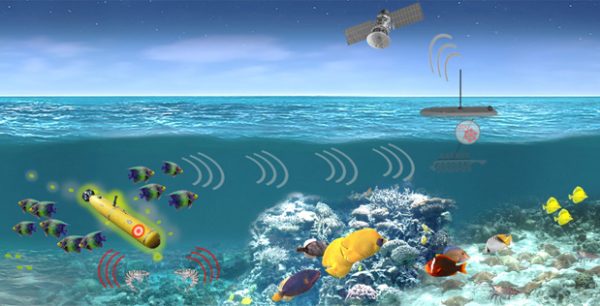The US military decided to deploy networks of manned and unmanned platforms and sensors in order to monitor adversary activity in the oceans. This is a challenging task, in which hardware alone cannot meet every need in the dynamic marine environment. Sea life, however, offers a potential new advantage.
Marine organisms are highly adapted to their surroundings and a new program of DARPA’s Biological Technologies Office aims to take advantage of their natural sensing capabilities to detect and signal activities of interest that are occurring in strategic waters.
This project is called the Persistent Aquatic Living Sensors (PALS) program, led by program manager Lori Adornato, and will study natural and modified organisms to determine which ones can support sensor systems that detect the movement of manned and unmanned underwater vehicles. PALS will investigate marine organisms’ responses to the presence of such vehicles.
These sensor systems also offer a number of advantages over hardware. Namely, sea life adapts and responds to its environment and it has the ability to sense stimuli across domains. Even extreme low light is not an obstacle to organisms that have evolved to hunt and evade in the dark.
DARPA will also have to develop hardware, software, and algorithms to translate organism behavior into tangible information and then communicate it to end users.
DARPA is in favour of proposals employing natural organisms, but proposers are able to suggest different proposals as well. The proposers will be responsible for developing the necessary environmental safeguards to support future deployment. However, DARPA will not test modified organisms outside of contained, biosecure facilities.
PALS is expected to be a four-year research program requiring contributions in the areas of biology, chemistry, physics, machine learning, analytics, oceanography, mechanical and electrical engineering, and weak signals detection.

































































